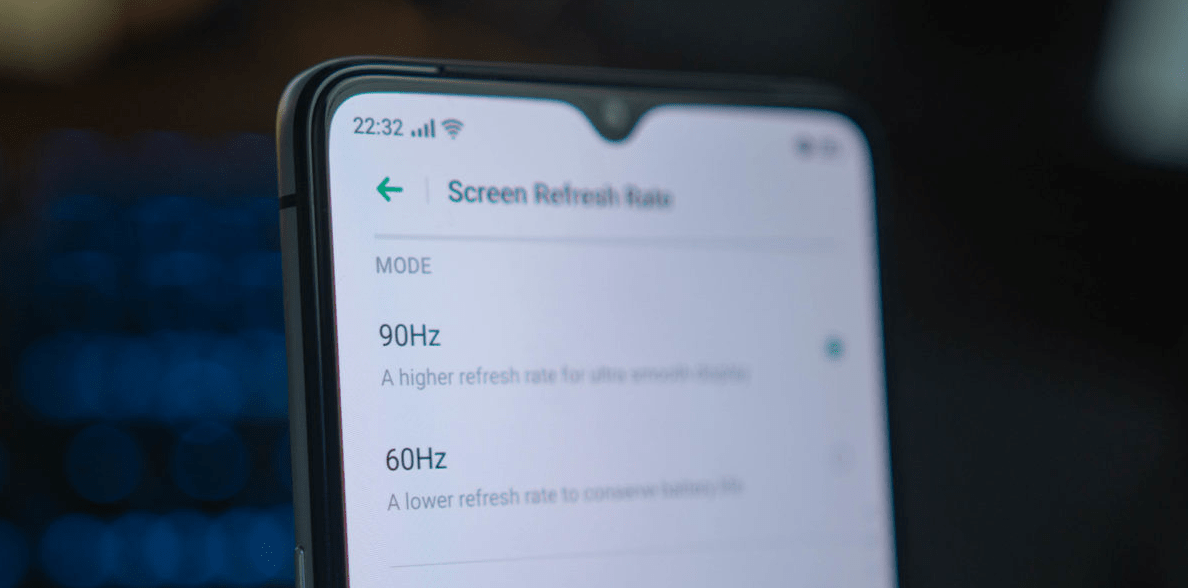But for what reason should you buy a phone with the latest screen trend?
High-end smartphones are increasingly using high frequency screens like 90Hz or 120Hz. The letter looks like great news, and it is a chance for companies to differentiate themselves from others.
But for what reason should you buy a phone with the latest screen trend? In fact there is no definitive answer. The benefits of a high-frequency display and how it works are not well understood by most users. While the games and content look sweeter, it is worth noting the battery consumption.
In this article we explain everything you need to know about these screens.
> Check Out: How to Calibrate Mobile Phone Battery – That’s why it Needs Calibration
What is the screen frequency?
The screens are not static. The content and movement of objects are smooth to the eye because each pixel is updated on-screen with the latest contents through the processor. But it does not happen irregularly and unexpectedly. The panels update the contents that appear on the screen at regular intervals known as the screen frequency.
Simply put, the screen frequency is how fast a smartphone’s screen is updated. It is measured in Hertz (Hz) and is indicated by a number of times the screen is updated per second.
A 60Hz display is updated 60 times per second, 90Hz full 90 times per second, and 120Hz at a dizzying speed of 120 times per second. So a 120Hz screen is updated twice as fast as a 60Hz screen and 4 times faster than an old 30Hz TV.
Faster refresh means less delay because the pixels are refreshed more often. For example it takes 16.6ms for a 60Hz display to update, 11.1ms for a 90Hz display and 8.3ms for a 120Hz display. Your smartphone screen is not refreshed all at once but with horizontal rows of pixels from start to finish.
> Check Out: GUIDE 2020: How to know when the battery of the phone needs to be replaced?
What do 60Hz, 90Hz and 120Hz mean for my phone?
The high frequency of screen refresh makes content and graphic movements smoother and faster. In fact, most of them do not benefit from this frequency, such as interacting with e-mails and Facebook apps that are limited to 60Hz.
Most videos on the internet are at 24 frequencies per second or 24Hz. But apps and graphics content will pop up faster with a high-frequency display.
Such screens actually make the difference in video games. High frequency has an impact on video game as well. Usually players use 120Hz or 144Hz frequency screens. Now mobile players can also benefit from this. Thus the graphical frequency of the game is in line with the screen frequency.
The biggest cost of these screens is the battery life. For example, in the OnePlus 7 Pro, the 90Hz screen reduces the battery life by 200 minutes.
Should I buy a 90Hz or 120Hz screen phone?
This screen technology is becoming popular with modern smartphones especially in the high end segment. Screen frequency is just one aspect of a smartphone screen and not a feature that will affect whether or not to buy a smartphone.
What matters most to a screen is its color gamut, contrast, temperature and resolution. If you want to buy such a phone below then you should buy one of these models:
- Samsung Galaxy S20 – 120Hz
- OnePlus 7T – 90Hz
- OnePlus 7/7T Pro – 90Hz
- Realme X50 Pro 5G – 90Hz
- Asus ROG Phone 2 – 120Hz
- Google Pixel 4 XL – 90Hz
> Read Next: (2020) iOS vs. Android, which is the best system?
So what do you think about this? Let us know your thoughts in the comments section below, follow us on twitter and facebook for more news and updates.
